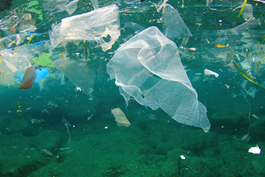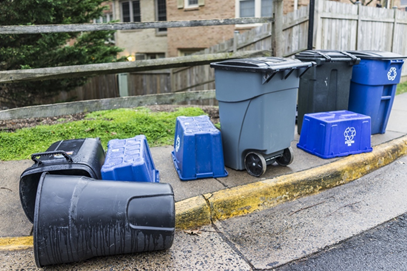9.4: Writing Skills- The Persuasive Paragraph
- Page ID
- 104463
What Is a Persuasive Paragraph?
A persuasive paragraph is one which argues for or against a controversial topic. A persuasive paragraph answers the question, “Why do you think …?” Persuasive paragraphs often address questions beginning with “Should …?” The paragraph below is an example of a persuasive paragraph.
Every year, around 1,000 people attempt to reach the summit of Mount Everest, and about half of them are successful. While climbing Everest is increasingly attractive, only professional climbers with proven experience should be permitted to attempt it; the reasons are safety to both climbers and guides, and damage to the environment. First, at 8,848 metres, Everest is a dangerous mountain. Since Sir Edmund Hilary and Sherpa Tenzing Norgay first reached the summit in 1953, over 250 people have died trying to follow in their footsteps. The dangers are lack of oxygen and the risk of avalanches. Other dangers to health include hypothermia, frostbite, delirium, and snow blindness. When inexperienced climbers are on the mountain, it slows everyone down, leaving them exposed to dangers for longer. Second, climbers need to hire Sherpa guides from the local communities in Nepal. Given the increase in demand for guides, those hired often lack sufficient experience and put their own lives in danger. Perhaps most importantly, the effect on the environment in the Everest region is devastating. Everest has been described as the world’s highest garbage dump. Climbers leave everything on the mountain: tents, oxygen tanks and other climbing equipment, food containers, and personal waste. The risk of damaging the fragile ecosystem is not worth taking. Although Everest expeditions provide a significant source of income to the country of Nepal, and climbing equipment is better than in the past, it is clear that climbing the world’s highest mountains is still not for amateurs or those looking for an adventure vacation.

What Makes a Good Persuasive Paragraph?
Much of the information you have learned about writing a good cause/effect or compare/contrast paragraph is also true here.
- It explains why the question is controversial. In the paragraph you have just read, the writer points out that climbing Everest is increasingly attractive, with around 1,000 climbers attempting to reach the summit each year.
- It presents a clear opinion. When writing a persuasive paragraph, you need to take a stand. Don’t sit on the fence. You should imagine your reader as someone who is undecided about the issue; your job is to convince the reader that your point of view is the best one. The writer’s opinion is presented early in the paragraph; it is then repeated at the end of the paragraph.
- It shows recognition of other, opposing points of view. The example paragraph recognizes that some people have different opinions—they might argue that the economic benefits of climbing Everest outweigh the dangers, or that climbing equipment is safer today. The writer’s argument is, “Yes, that’s true, but …”
- It uses supporting details to support the main arguments. In the example paragraph, the writer lists a number of medical conditions that can arise when climbing at high altitudes. The writer also gives examples of the kinds of items that climbers leave behind on the mountain.
Steps for Writing the Persuasive Paragraph
- As always, your writing should begin with some brainstorming. Think about your topic—what do you want to say about it? What opinion are you going to express? Use a mind map to start to collect some ideas. Be sure to consider the opposing argument. How are you going to argue against those people whose ideas are different from your own?
- Make a plan for your paragraph. Make sure you are presenting your ideas in a logical order.
- Write your first draft. Don’t worry about getting everything perfect at this stage; just get your ideas on paper. Make sure you have included enough detail.
- Revise your draft. Follow the ARMS checklist you learned in Unit 1 (Add, Remove, Move, and Substitute). You may want to use words like First, Second, and Finally to introduce your various points. Be sure that you have given enough supporting details to make your argument believable. Remember that your job is to convince the reader that you are right and other people are wrong.
- Edit your paragraph and write your final draft. Now that your ideas are in place, you can focus on grammar, spelling, word choice, and punctuation.
You Try It!
Look at the following examples of persuasive paragraphs. Answer the questions below each paragraph.
Paragraph 1
While cruising is a popular form of vacation for Canadians, there are significant dangers in the form of liquid waste, solid waste, and oil spills. As a result, cruise lines should be regulated, the rules should be strictly enforced, and those who do not follow them should be severely punished. First, cruise ships produce a large amount of liquid waste, and some of it ends up in the ocean. The largest source of liquid waste is greywater, which has been used in the kitchens, laundry facilities, and guest bathrooms. A cruise ship carrying 3,000 passengers can dump up to 900,000 litres of greywater each day. If this is not treated, it can contain bacteria that are dangerous to marine life. A large cruise ship generates about 8 tons of solid waste every week. Passengers may throw soft drink cans, food wrappers, and other items overboard, endangering sea creatures, such as turtles and seals, and putting the safety of birds at risk. Some garbage is burned on the ship and the ash is dumped into the sea. This can also be toxic for marine life. Finally, there is a danger of oil spills if the ship runs into trouble. The result could be the death of thousands of fish and birds. These dangers cannot be ignored, and it is important that regulations to prevent damage are strictly enforced around the world.

1. What point is the writer making here?
________________________________________________________________________
________________________________________________________________________
2. What details does the writer give to support the main idea?
________________________________________________________________________
________________________________________________________________________
________________________________________________________________________
3. Are you convinced by the writer’s argument? Why, or why not?
________________________________________________________________________
________________________________________________________________________
Paragraph 2
Recycling is seen as very important in Canada, and all public buildings and many homes have recycling boxes. However, recycling is not effective, and it should not be encouraged. First, recycling is difficult. No one really knows what to recycle and what to throw in the garbage. The rules are always changing. Second, recycling is expensive. Someone has to collect the recycled items and take them to the recycling centre. The recycling centre has to pay people to handle the large amounts of recycled material coming in. This is much more expensive than simply taking it all to the dump. This is not good for the economy. Third, there are modern ways of dealing with garbage today, such as incinerators that do not cause air pollution. It would be more efficient to just burn the garbage, rather than go to the trouble to recycle it. Finally, when we recycle, we think we are doing something to help the environment and protect nature. What we should really do is cut back on the amount of waste we produce. Instead of buying a drink in a glass bottle and then recycling the bottle, we should try not to buy that bottle in the first place. For those reasons, recycling is not worth the trouble.

1. Why does the writer think recycling should not be encouraged?
________________________________________________________________________
________________________________________________________________________
2. The writer gives no statistics here. Find some places where the use of a statistic might have been helpful.
________________________________________________________________________
________________________________________________________________________
3. How would you respond to this writer? What would you like to tell the writer?
________________________________________________________________________
________________________________________________________________________
In Bring It Together: Writing Task you will write a persuasive paragraph on a topic related to your own region or community. Use what you have learned in this section to help you.

